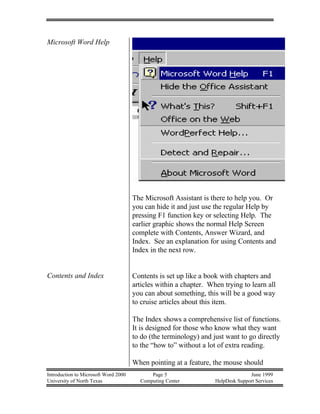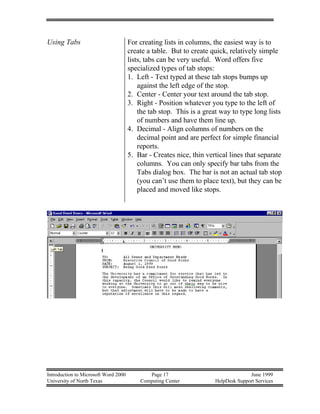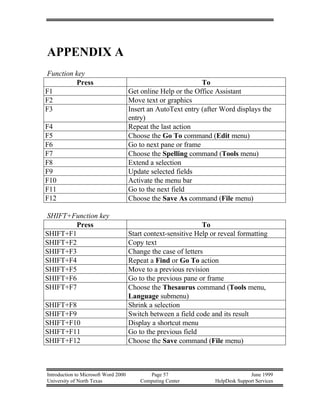This document provides an introduction to Microsoft Word 2000. It covers the basic screen layout including the title bar, menu, toolbars, rulers, scroll bars, and status bar. It then discusses how to use Help, navigate documents, insert dates, save files, print, center text, select text, change fonts, and more. The goal is to make Word's word processing needs easy to accomplish for new users.

































































